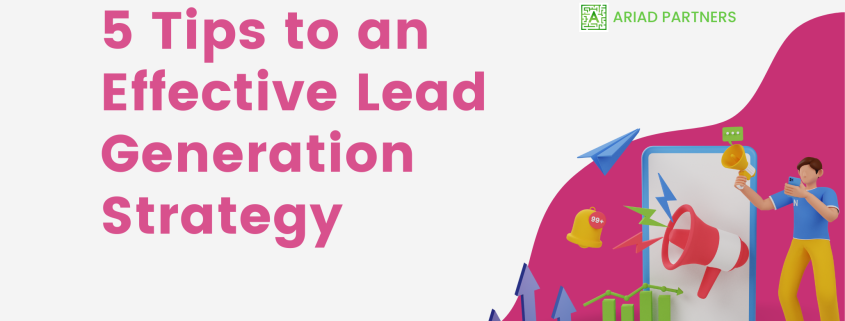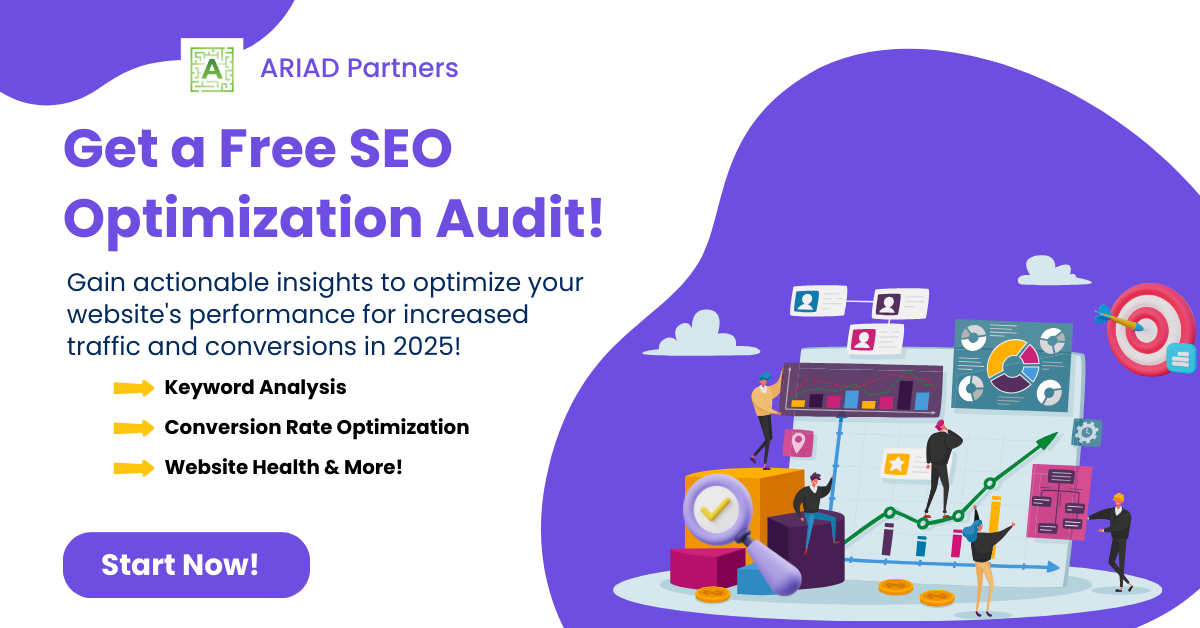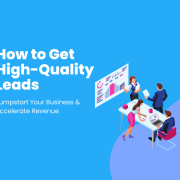5 Ways to Supercharge Your Lead Generation Strategy in 2025
Establishing a consistent stream of organic or inbound leads sits at the top of the most wanted list for digital marketers across all industries today. Generating high-quality leads is also one of the most crucial challenges for businesses looking to expand their customer base and increase revenue. A fully optimized lead generation strategy requires a powerful, strategic approach to drive consistent results–dive into these five proven approaches that can transform your lead generation game in 2025. But first…
What is Lead Generation?
Lead generation (lead gen) is the process of attracting potential buyers to your website, engaging them with useful content, and nurturing them with relevant information with the end goal of converting them into customers.
A “lead” is someone who has displayed interest in your product or service. This is usually done by sharing their email address or phone number. Here’s an example of how lead generation works:
A potential buyer discovers your business through one of your online channels:
- Your website
- Social media platforms
- Blog posts
- Email campaigns
- Online ads
They take an action showing interest, such as:
- Signing up for a newsletter
- Downloading a free guide
- Filling out a contact form
- Starting a free trial
The ultimate purpose of lead generation is to create a roadmap that guides prospective buyers from the first step of attracting them to your site through converting them into customers. Some common lead gen content included in these roadmaps:
- Creating valuable content (blogs, whitepapers, ebooks)
- Offering free tools or resources
- Educational webinars
- Landing pages with contact forms
- Free trial offers or demos
Supercharge Your Lead Generation Strategy
1. Create Dynamic, Interactive Content Experiences
Traditional static content is no longer enough to capture and maintain audience attention. Modern lead generation demands interactive content that engages prospects on a deeper level to provide immediate value to your audience and collect actionable insights about their needs and preferences while providing new or fun ways to interact.
Examples of interactive content include:
- Assessments
- Calculators
- Quizzes
- Gamification
A B2B marketing company might offer an ROI calculator that helps prospects understand the potential ROI of implementing HubSpot CRM and Inbound Marketing Strategy. The more information they provide, the more complete and personalized the results will be.
2. Utilize Automated Chatflows to Engage and Delight
A customer-centric engagement strategy requires a deep understanding of your prospects’ goals and challenges to learn how you can help; with the help of AI-powered chat widgets, businesses can communicate value and provide support to visitors while collecting valuable data about the prospect at the same time. HubSpot CRM allows you to customize your business chatbot’s appearance, availability settings, and live chat options, allowing you to continuously engage with website visitors, regardless of the time of day.
Chatflows that mimic human engagement create a more seamless interaction, simplifying the data collection process while providing immediate answers to your potential customer’s questions.
Use AI-powered chatbots in your lead generation strategy to:
- Identify good-fit leads
- Schedule a meetings
- Match them with relevant content that aligns with their search

3. Take an Omni-Channel Approach to your Lead Generation Strategy
Your current marketing strategy most likely includes a list of channels your prospective buyer engages with online, depending on their demographic. While each buyer persona differs, implementing a multi-faceted approach to your outreach will keep your business and its solutions top-of-mind with potential customers.
Examples include:
- Email Marketing – newsletters, lead nurture campaigns, etc.
- Social Media – Facebook, X, Instagram, LinkedIn
- Retargeting – SEM, PPC, Google Ads
Tips for Creating More Effective Lead Magnets:
-
- Broad Value: To attract a wide range of audiences, begin with a general resource, such as an industry guide or introductory webinar.
- Deep Insights: Follow up with more specific content that addresses targeted pain points, like a case study, whitepaper, or product comparison guide.
- Interactive Elements: Use quizzes, calculators, or assessments to engage prospects while gathering qualifying data.
- Highlight Solutions: Offer tailored content demonstrating how your product or service solves prospects’ specific challenges and helps them meet their goals.
- Clear Calls-to-Action (CTAs): Ensure each lead magnet guides prospects through each stage of their buyer’s journey and toward a purchasing decision.
4. Implement a Micro-Commitment Sequence
Traditional lead generation often fails because it requires too much information upfront. Micro-commitment sequences take a different approach, breaking down the lead capture process into smaller, more digestible steps. This psychological approach makes prospects more likely to complete the conversion process rather than bounce off the page when they see the work ahead.
For example, instead of presenting a lengthy form asking for multiple pieces of information, start with a simple question or single-field form such as their company email address. Once a visitor engages with this “micro-commitment,” you can ask for additional information through a series of small steps.
Here’s an example of how a B2B SaaS company might implement micro-commitment sequences in their lead generation process:
Lead Generation for a Project Management Tool:
- Initial Engagement with a Single-Field Form
- The homepage features a chatbot or a prominent banner that asks:
“What’s your company email to get started with a free project management tool demo?” - This single-field form minimizes friction; visitors only need to provide their email to take the first step.
- The homepage features a chatbot or a prominent banner that asks:
- Follow-Up Question for Context
- After the email is submitted, the system asks:
“Great! What’s your role in the company?”
Options could include:- Project Manager
- Team Leader
- Developer
- Other
- After the email is submitted, the system asks:
- Tailored Next Steps Based on Responses
- The chatbot or form dynamically adjusts based on the selected role to gather relevant information. For example:
- If the visitor selects “Team Leader,” the next question might be:
“How many team members are you managing?” - For “Project Manager,” it might ask:
“Which features are you most interested in? (e.g., Gantt charts, task automation, or integrations).”
- If the visitor selects “Team Leader,” the next question might be:
- The chatbot or form dynamically adjusts based on the selected role to gather relevant information. For example:
- Final CTA
- Once you’ve gathered the necessary details, prompt the prospect to take the final step: schedule a demo or download a product pricing guide. For example:
- “Thanks, [First Name]! We’ve prepared a demo to showcase how our solution can help [Team Leaders/Project Managers] streamline its workflows. Are you free next week?
- Once you’ve gathered the necessary details, prompt the prospect to take the final step: schedule a demo or download a product pricing guide. For example:
Why It Works:
-
- Shortens the path to conversion: Simple requests encourage prospects to engage without overwhelming them with questions or unnecessary content.
- Creates a more personalized experience: Customized interactions can build trust and further interest.
- Gathers actionable insights: Capturing key details in smaller steps allows you to qualify leads effectively and nurture them more strategically.
5. Lead Generation Strategy for Voice Search and Zero-Click Queries
Keyword optimization has taken a new form with the rise in digital assistance, including Apple’s Siri, Google Assistant, and Amazon Alexa. Now, successful lead generation strategies must include Voice Search Optimization (VSO) to their SEO strategy to adapt to voice search queries and how they differ from text-based searches.
Lead Generation Strategies for Effective Voice Search Optimization:
-
- Optimize Content with Conversational Keywords: Update your content to include natural spoken language focusing on full sentences and the actual questions users might say out loud.
- Aim for Featured Snippets: Structure your content to provide clear and concise answers to questions.
- Leverage Long-Tail Keywords: Target specific phrases that reflect how users typically frame voice queries, such as “What are some best practices for inbound marketing for manufacturing companies?”
- Develop Content to Address Problems: Create articles, FAQs, and guides that address industry pain points and provide solutions.
Aligning your content strategy with voice search trends will improve discoverability, engage prospects more effectively, and guide them through your lead generation funnel.
Conclusion
An effective lead generation strategy requires a sophisticated, multifaceted approach that combines marketing technology and strategic content to deliver users an exceptional experience that will continue to attract high-quality leads and increase revenue. Maintaining consistency is key to long-term success.
Contact our team to learn how we can help you supercharge your lead generation in 2025!









